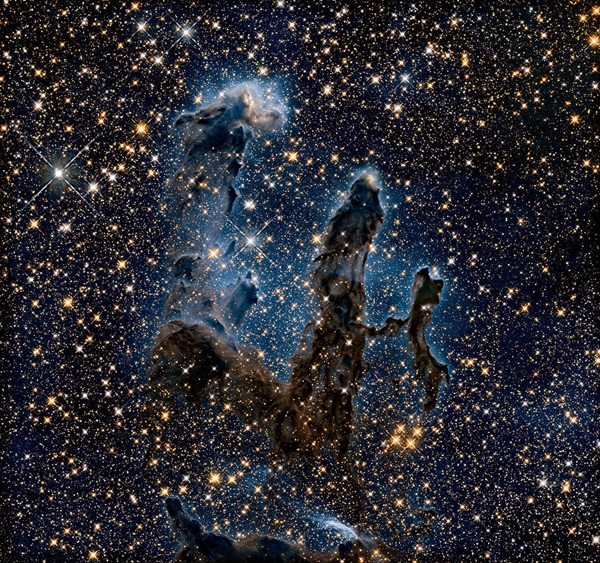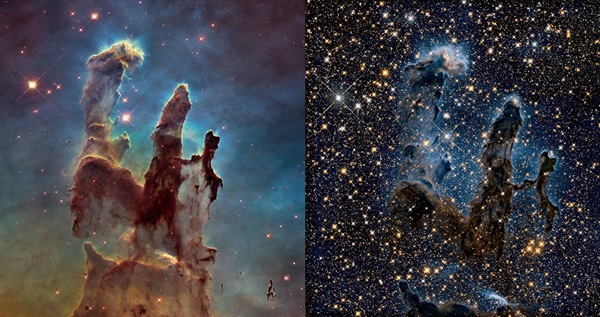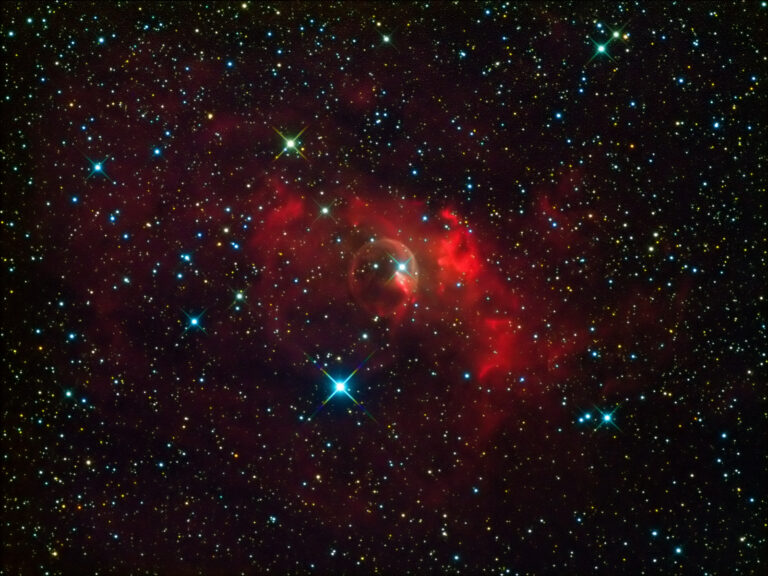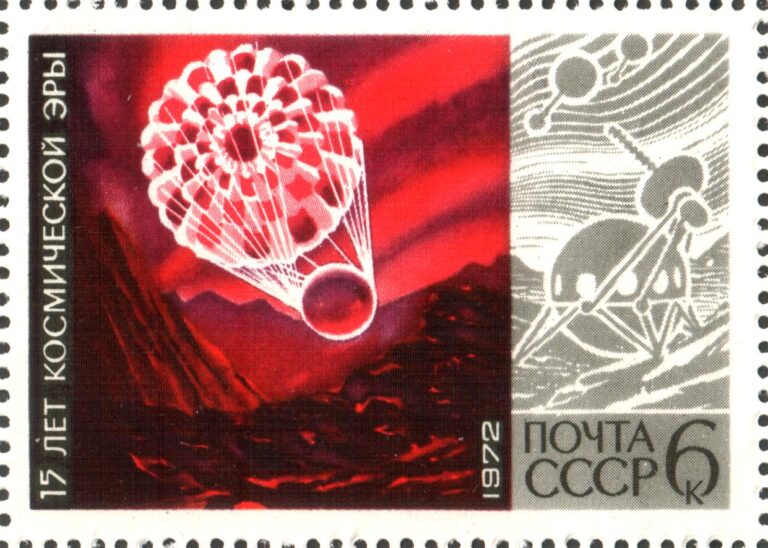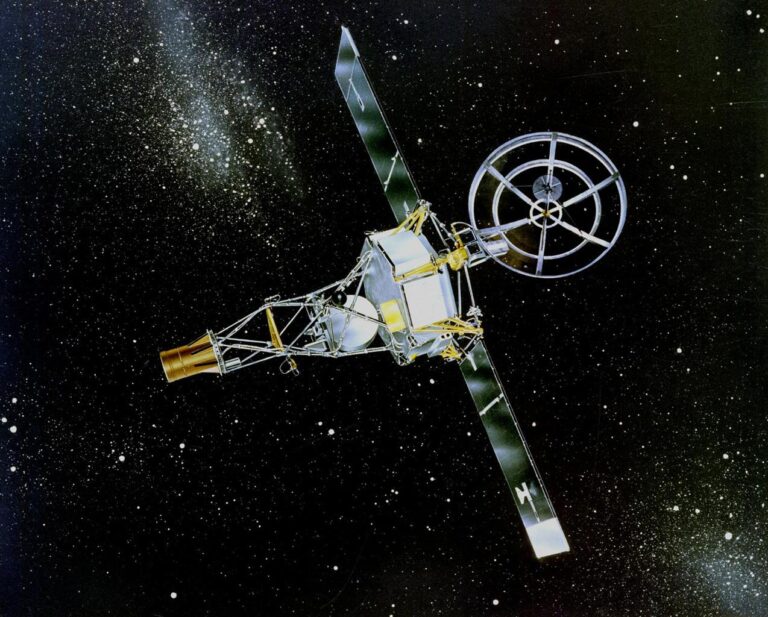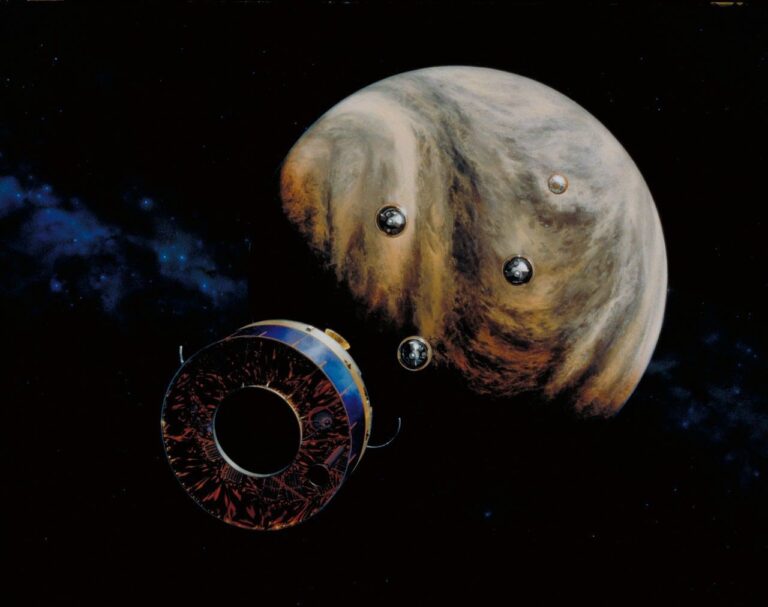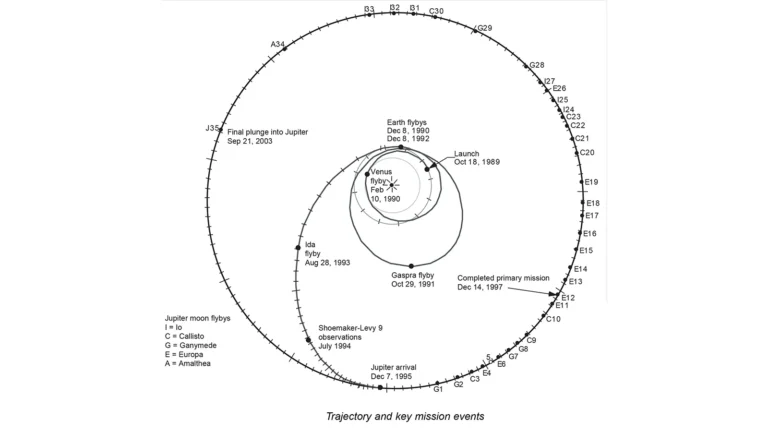Key Takeaways:
Located about 7,000 light-years away in the Eagle Nebula (M16), the so-called Pillars of Creation is one of the many wonders of the cosmos. There’s almost something humbling about seeing photos of it, no matter what wavelength of light is used.
The Hubble Space Telescope has been taking stunning photos of the Pillars of Creation since 1995, when it first captured its iconic visible-light image. The above image, however, was taken in infrared light, which results in this shadowy view of the pillars. Because infrared light easily cuts through cosmic dust and gas, the stars in this unique view shine brighter, and the pillars themselves appear as ghostly silhouettes against a dark blue haze.
The Pillars of Creation were first discovered in 1745 by Swiss astronomer Jean-Philippe Loys de Chéseaux. They stretch about 55 to 70 light-years across, harboring a cosmic nursery where new stars are born.
The light of the surrounding stars, some just stellar infants, stands out in this infrared view. In the more iconic visible-light shots of The Pillars of Creation, however, the stars are far and few between, as they are largely veiled by dust.
By looking at the Pillars of Creation in a different light, the stars that are normally hidden suddenly pop. This is especially true for the bright, young stars at the top of the pillars, which were largely veiled in Hubble’s visible-light shot. The infrared view also highlights where the cosmic gas and dust are extremely thick, still managing to mask the dust-penetrating infrared light emitted from stars within.
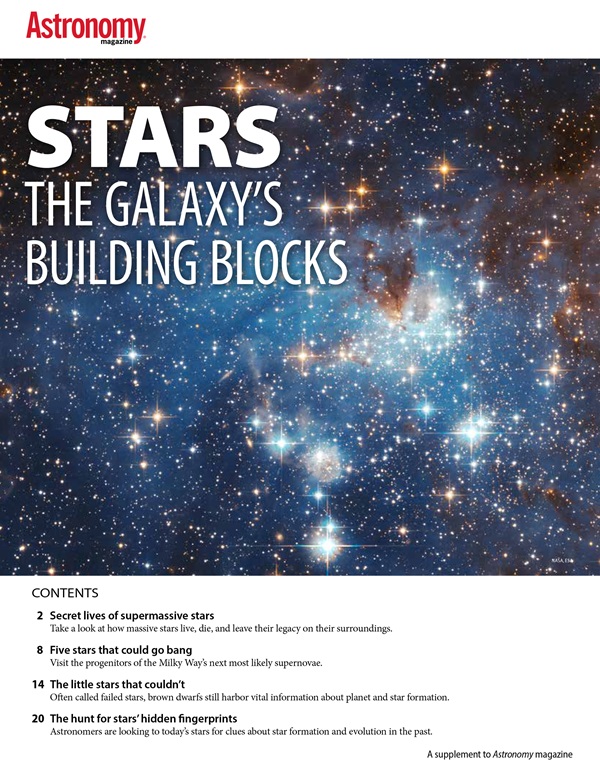
What we can learn from the life cycles of stars? Astronomy’s free downloadable eBook, Stars: The galaxy’s building blocks contains everything you need to know about how stars live, die, and change their galactic homes over time.
Astronomers observe the universe using many different wavelengths of light, and each has its own advantages and disadvantages. This is why telescopes and instruments are usually built with specific range of wavelengths in mind. For example, the Hubble Space Telescope mainly sees in visible light and stretches into both the near-ultraviolet and near-infrared realms. Other telescopes focus on higher energy X-rays or gamma rays, while still more focus on lower-frequency light, like radio.
By having different telescopes that can see in different wavelengths, astronomers can dissect the universe in ways that would never be possible if they only observed in visible light.

